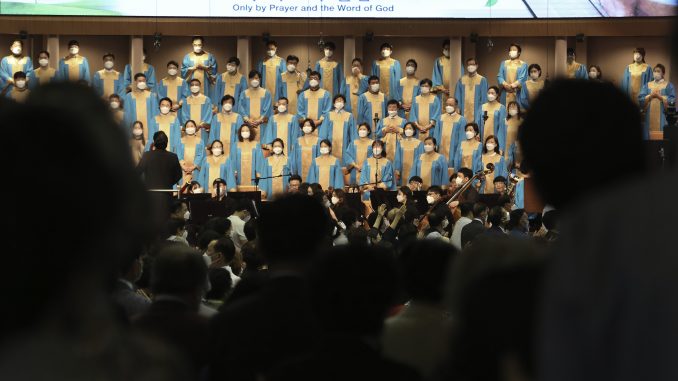
Because of COVID-19, churches no longer reverberate with song; hymnals are neatly stacked and projection screens blank. Even as church leaders plan for reopening, scientists warn that it might be too early to resume singing in groups.
Though such restrictions are understandable, they rob congregations of an important aspect of their Christian faith. As the Apostle Paul wrote in Ephesians 5, Believers should be “filled with the spirit, speaking to one another in psalms and hymns and spiritual songs, singing and making melody in your heart to the Lord.”
As a choral conductor, scholar in African American sacred music and teacher of sacred music and worship, I have studied the relationship between singing and worship for over three decades. Singing is critical to identity and faith. In some traditions, it is as important as the sermon. In African American churches, for instance, there is an equal emphasis on preaching, praying and singing.
First, verse
The importance of song in Christian worship can be traced to its Judaic beginnings. Throughout the biblical canon, the Apocrypha, the collection of books omitted from the Protestant Bible and noncanonical biblical texts, there are hundreds of references to Christians singing.
In the Old Testament, singing was used to praise God, provide lessons for the community, confess sins, provide solace in times of lamentation and joy in times of celebration. For instance, Moses and sister Miriam memorialized the miraculous exodus from Egypt through the Red Sea in song.
Early Christians even sang their prayers. The Book of Psalms – a collection of 150 songs and proclamations – served as the songbook of the early church.
The New Testament is similarly filled with song. In the Book of James, the Apostle Paul and his companion, Silas, sang their way to freedom in a jail. After the Last Supper, Jesus led the disciples in song.
Main chorus
Singing has tremendous power, both spiritually and physically.
When people sing, sound runs through the body, giving rise to emotion and facilitating transformation. It acts as a natural antidepressant by releasing endorphins, the feel-good chemical. Studies have also linked singing with improved mental alertness, memory and concentration through increased oxygenated blood to the brain. Neuroscientist Andrew Newberg found that changes in the brain during worship make people “nicer, more forgiving, and trustful.”
Choral singing creates the kind of community togetherness that is necessary in churches. It brings disparate parts into a cohesive oneness, just as corporate worship – the gathering of the faithful to worship together – brings individuals into oneness in Christ.
Bringing people together for song has proven to be dangerous in the coronavirus pandemic. On March 10, a group of 61 singers met at the Mount Vernon Presbyterian Church in Washington state for rehearsal. One of the members unknowingly infected 52 people with COVID-19; two people died.
Stay-at-home orders designed to stem the spread of diseases hit church music programs hard – some more than others.
Conversations I have had with church music directors around the country reveal the creativity employed to keep the music going: utilizing solo performers, prerecorded music, reducing the amount of music to the essential in liturgical services and creating virtual choirs.
Those with praise teams and bands that lead the congregation in song found it easier to provide music in online services – with fewer people, social distancing was easier to maintain. As a result, they continued to rehearse and perform in livestreamed or prerecorded services.
For churches that rely on choirs to carry the music, things have been tougher.
National guidelines limiting gatherings to 10 or fewer people meant no in-person choir rehearsals. Virtual choir rehearsals and performances are very problematic. Differences in bandwidth create lags that challenge the essence of choral singing: cohesion and community. Virtual performances demand technological expertise most choral directors are not trained to execute.
The resulting experience often falls short of a true choral experience. My own gospel choir, the Ebony Heritage Singers, recorded a song for the University of Dayton’s virtual commencement using this technique. The result was pleasing, but it lacked the true feel of a gospel music performance.
In my experience, virtual choral experiences are pale imitations of the real thing. Being connected in a physical way, feeling each others’ inhalations, coordinating exhalations and blending voices gives life to singers and to congregations.
A codetta?
Although research on the spread of COVID-19 is rapidly changing, singing in groups might be deemed too risky to enable churches to return to anything approaching “normal” for a long time.
So, until further notice, congregations are being advised to consider alternatives to singing. Worship may still be joyful, but it will likely be more quiet.
